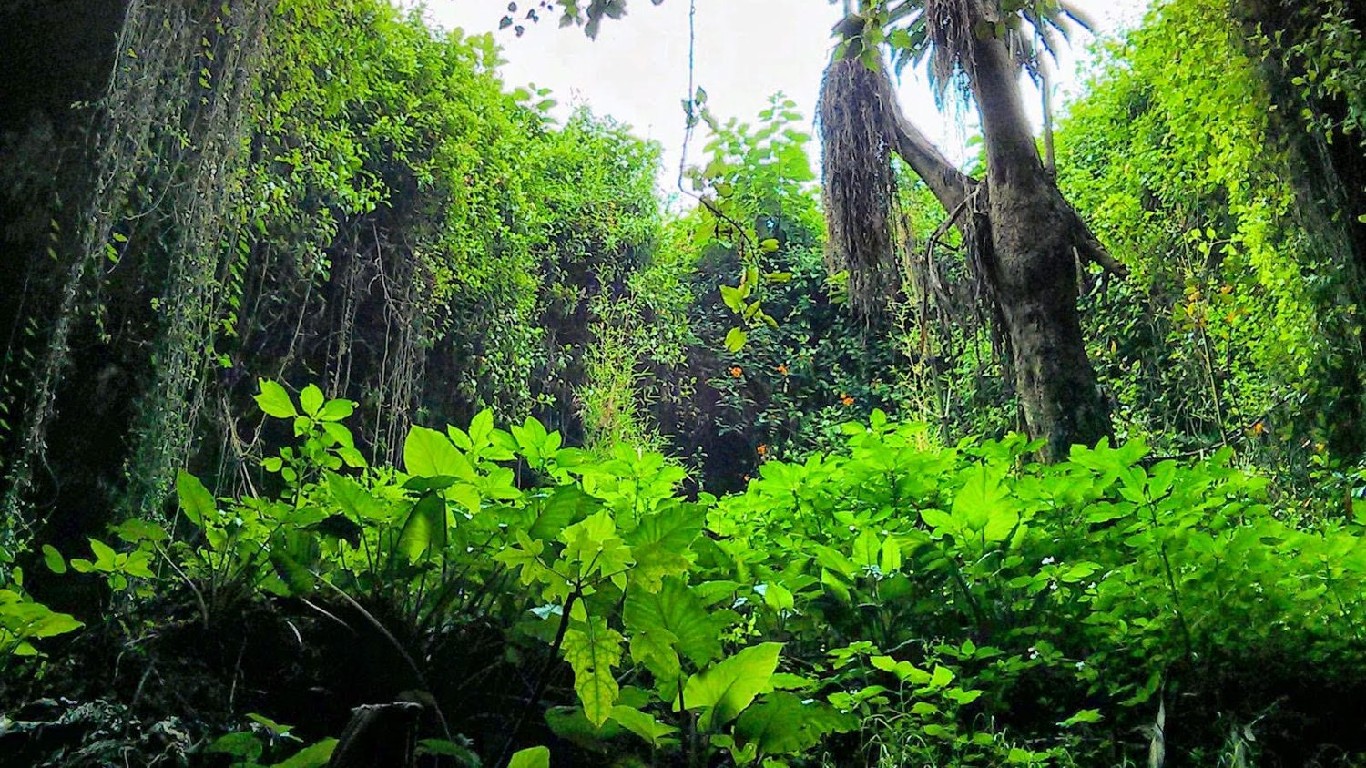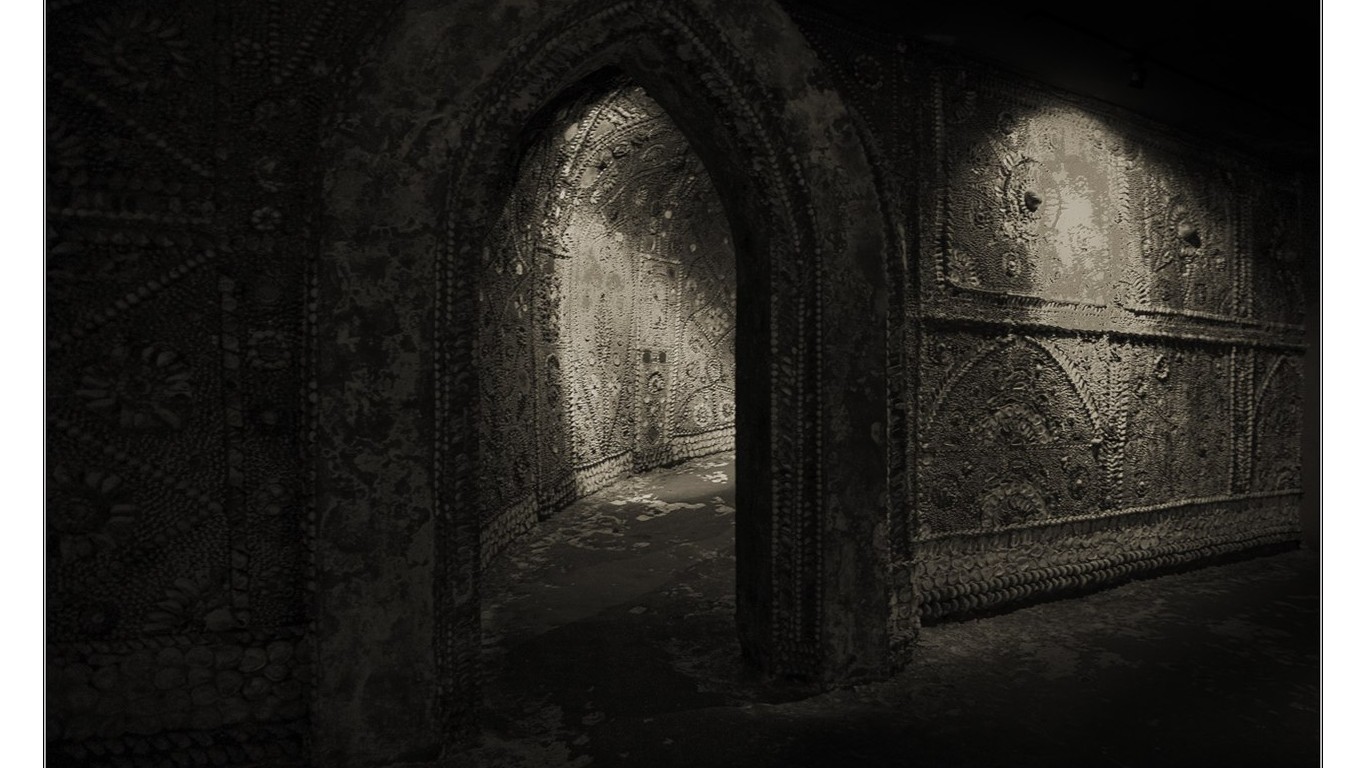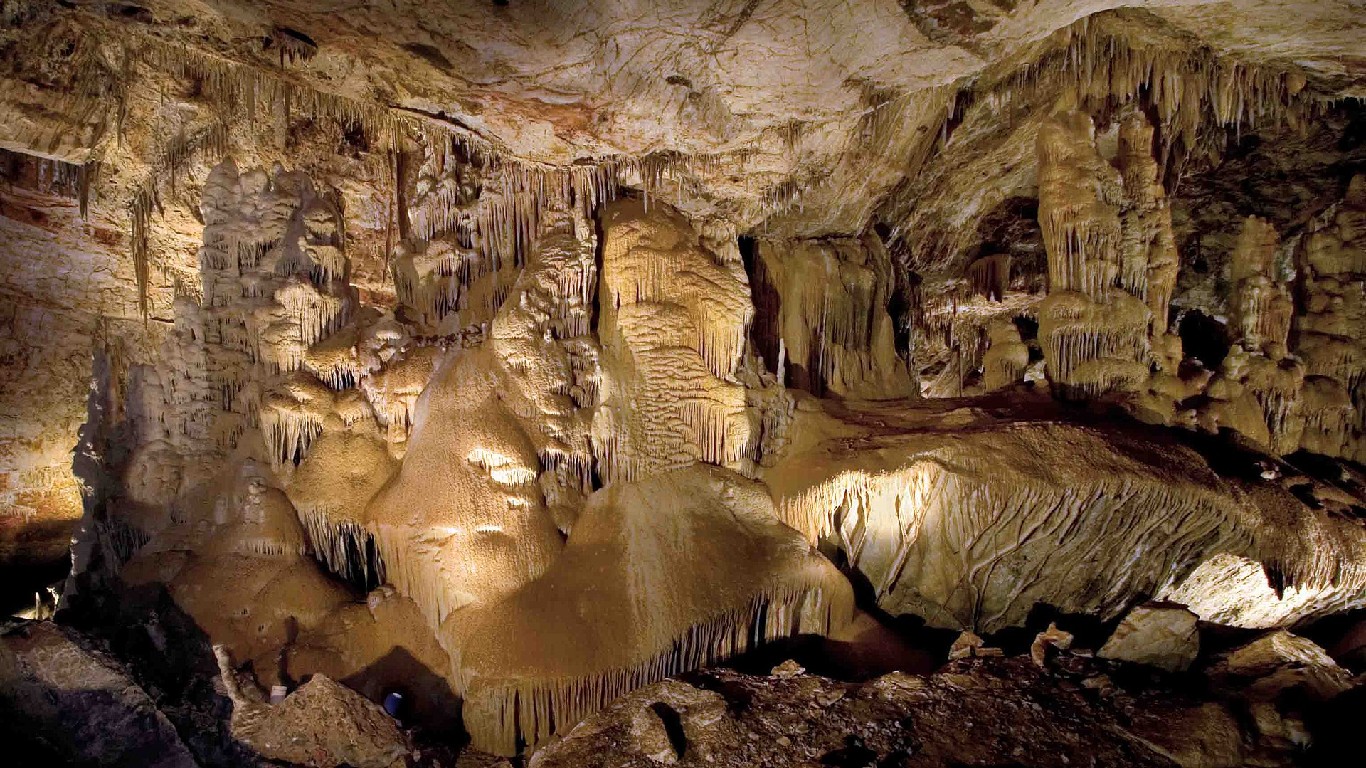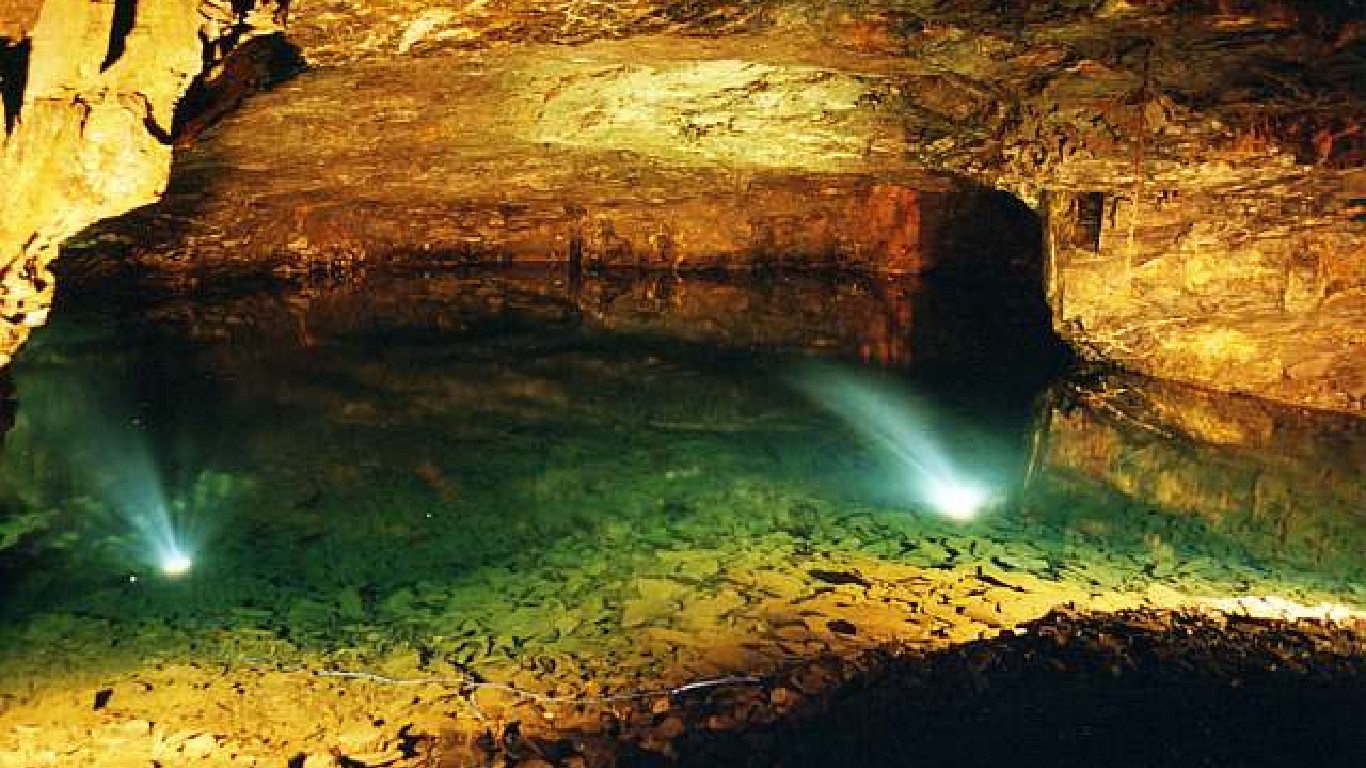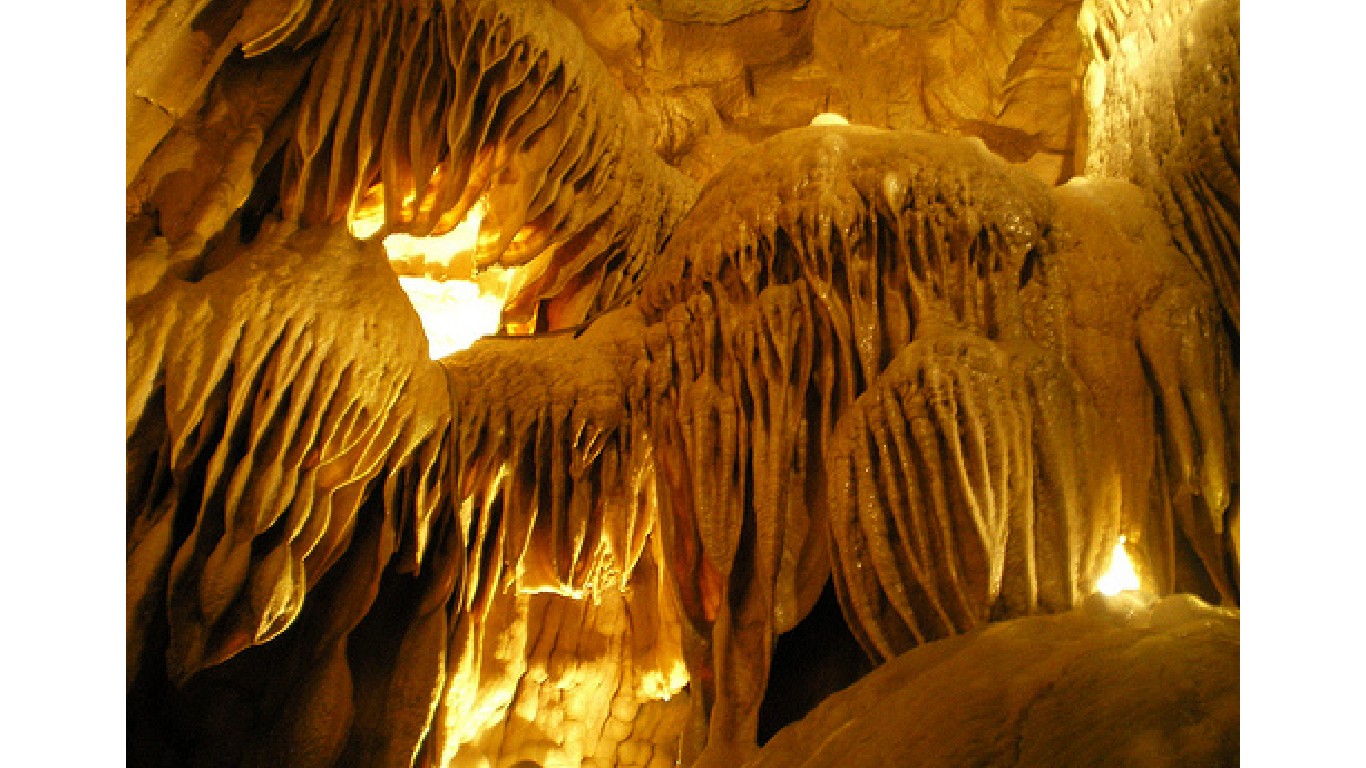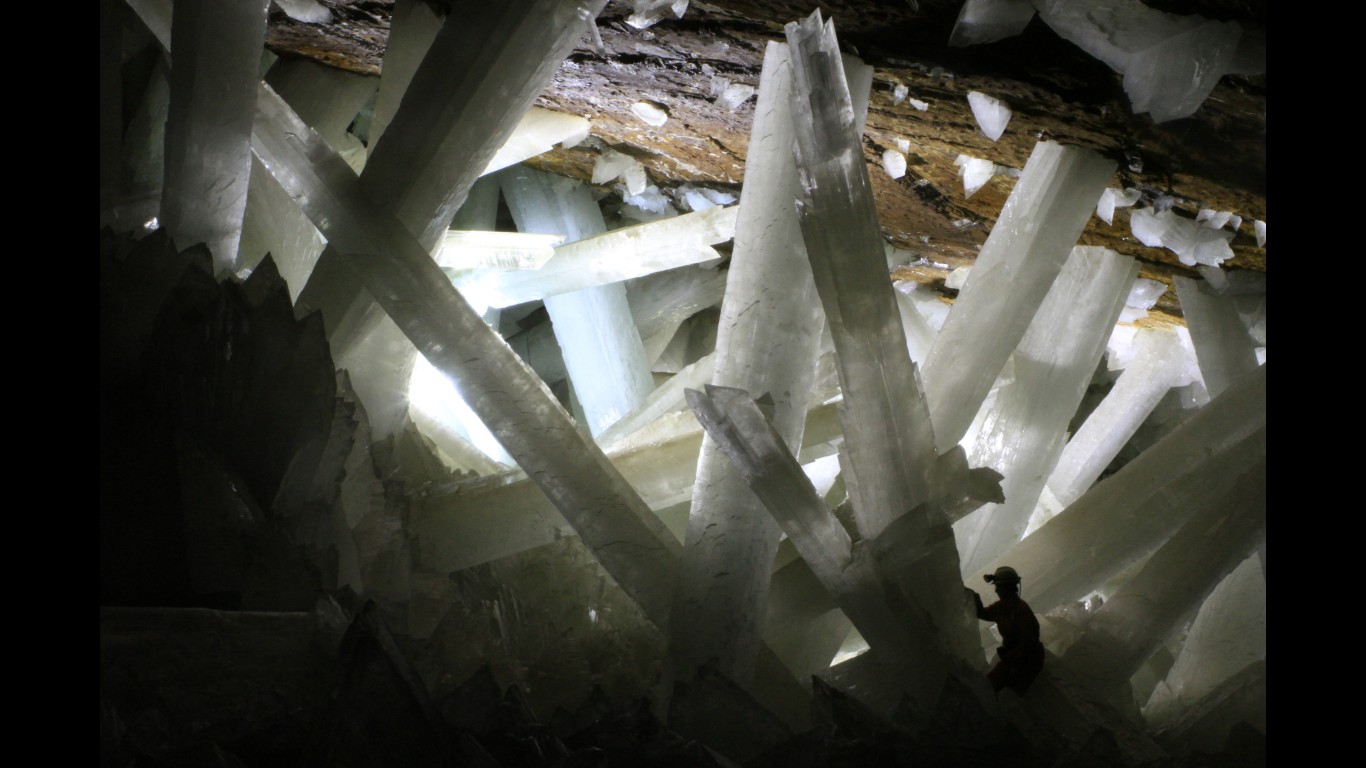
The world is full of amazing places. Though most people travel to see such sites above the earth’s surface, many are actually beneath it. Caves contain their own ecosystems that would not be sustainable above ground, and their environments are often studied by scientists known as speleologists.
Often hidden in jungles or wild rocky regions, they may not always be easily accessible, but that makes them all the more alluring to experience. Those who venture beyond the cave mouths – serious cave explorers are known as spelunkers, from the Latin word for cave, “spelunca”) often encounter narrow passages, precipitous drops, waterfalls and pools, and other potential hazards along the way, but that just adds to their appeal for many. (These are the most mysterious places in the world.)
While caves may be foreboding to some, many are things of great beauty. To determine the most beautiful caves in the world, 24/7 Tempo consulted numerous websites including Timeout and The Active Times, focusing on caves of striking natural beauty, as well as a few with exceptional man-made elements.
Click here to see the most beautiful caves in the world
The caves on the list vary significantly in age, from several thousand to several million years. Some are made of rock, others of ice. They may be surprisingly colorful or majestic in their solemnity. Each, though, is stunning in its own way. (These are the most colorful natural wonders in the world.)

Blue Grotto
> Location: Italy
Visitors can access this legendary location on the island of Capri off the coast of Naples by wooden rowboat – but only in calm seas at low tide. Inside, it’s almost completely dark. The cavern is only lit by azure blue light from the water – a crystalline blue with silver reflections.
[in-text-ad]
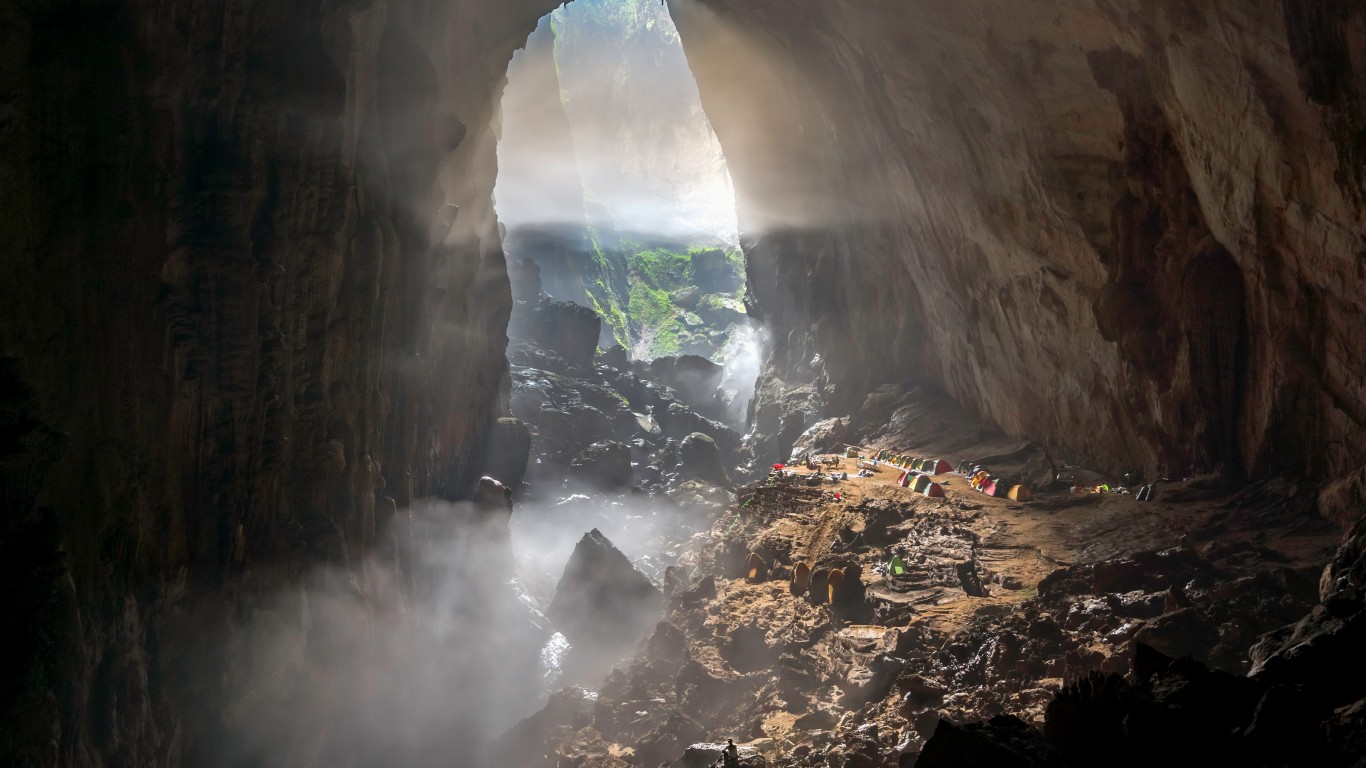
Hang Sơn Đoòng
> Location: Vietnam
If measured by cross-section, Hang Sơn Đoòng – in Phong Nha-Kẻ Bàng National Park, in Quảng Bình Province – is the biggest cave in the world. It was discovered in 2009 and opened to the public four years later. The cave is known for having underground rainforests.
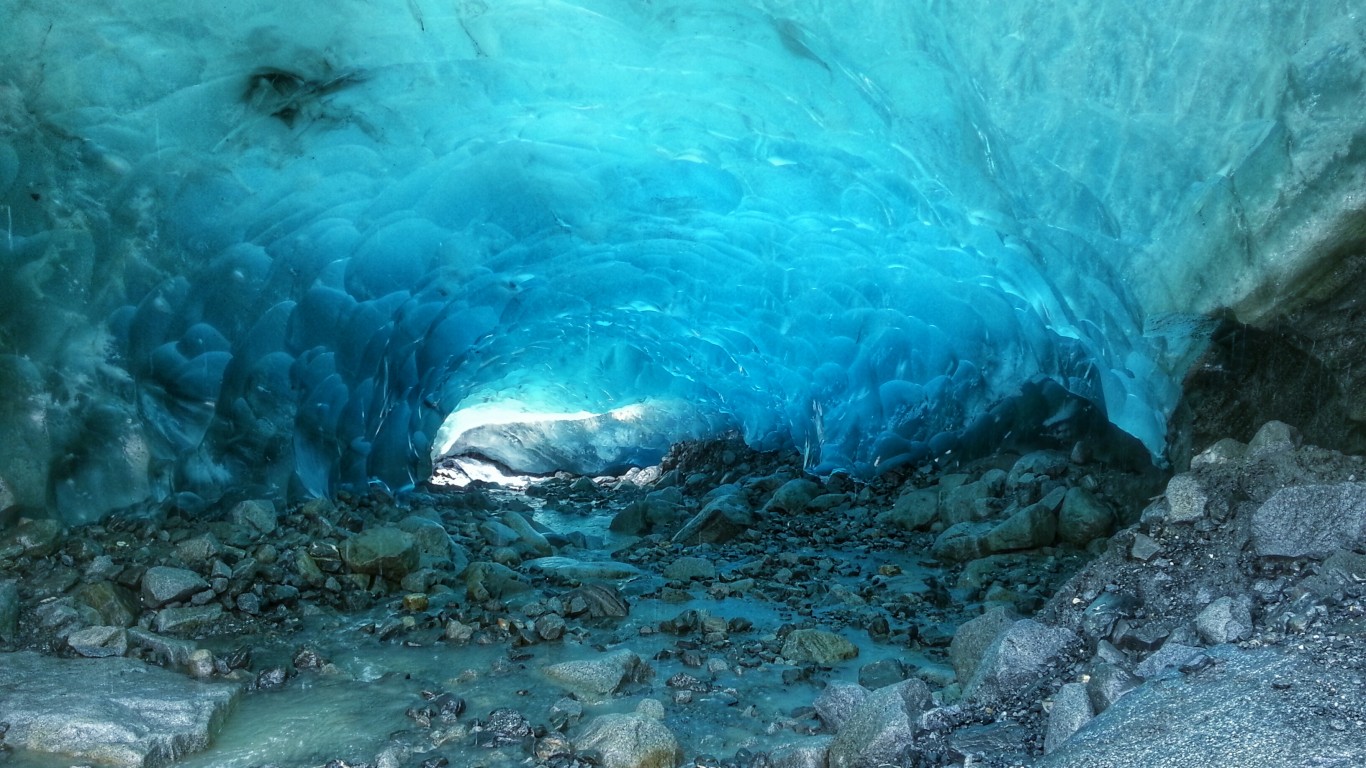
Mendenhall Glacier Caves
> Location: Alaska, USA
Inside a partially hollow 12-mile long glacier, the Mendenhall Ice Caves near Juneau are only accessible by first kayaking to the edge, then climbing over the glacier. Fast-rising ocean temperatures in recent decades have contributed to the glacier receding by almost two miles since 1958.

Pak Ou Caves
> Location: Laos
The Pak Ou Caves are a religious site, containing hundreds of statues of the Buddha. Local legend has it the caves were discovered in the 16th century and have been used for worship since then.
[in-text-ad-2]

Grutas de Cacahuamilpa Caverns
> Location: Mexico
Getting into these caverns – which form one of the world’s largest cave systems – requires a hike of over a mile. Cacahuamilpa is a “live” cave, meaning that water is still seeping into the formation.
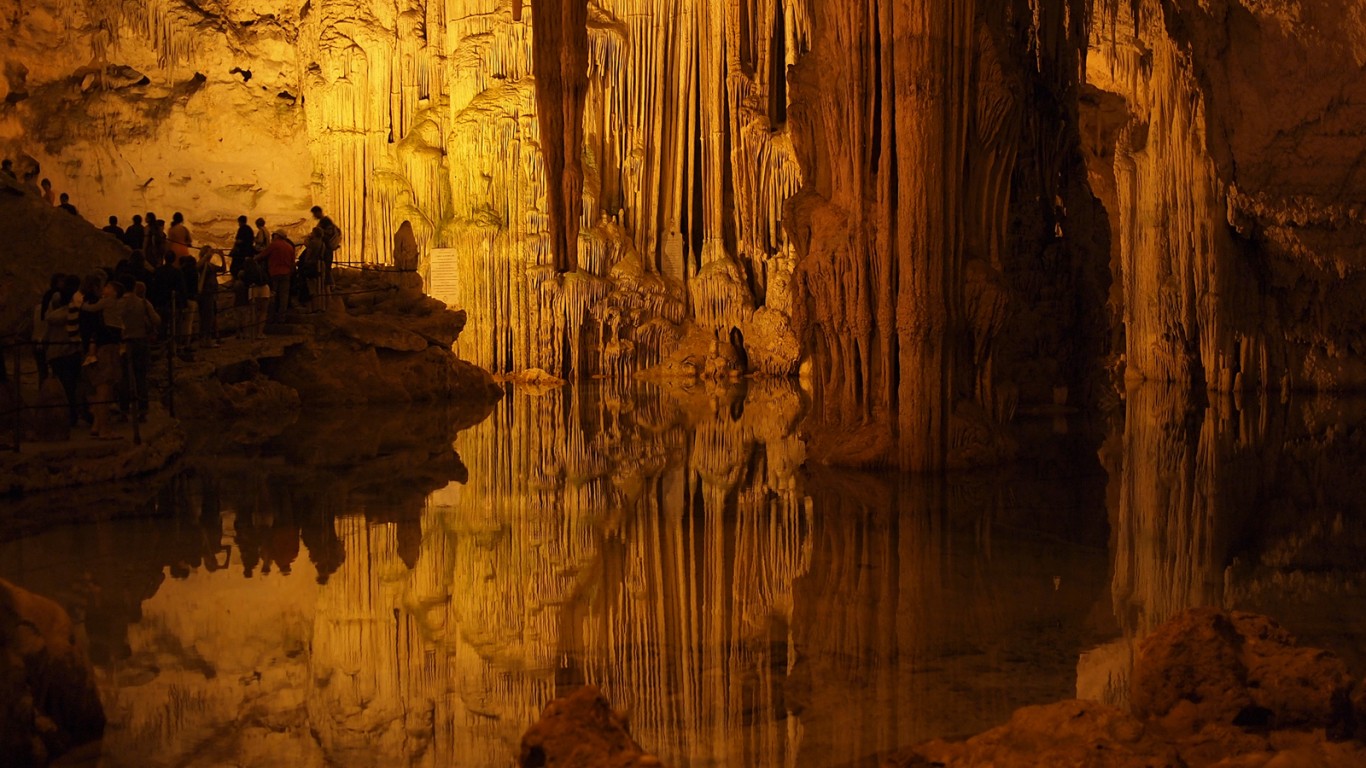
Neptune’s Grotto
> Location: Italy
One of the largest marine caves in Italy, Neptune’s Grotto – near Alghero in northern Sardinia – was formed about two million years ago. Inside, there is a huge underground lake and a white sandy beach.
[in-text-ad]
Caverns of Sonora
> Location: Texas, USA
The Caverns of Sonora are located just 15 miles southwest of the West Texas town of Sonora, about halfway between San Antonio and Big Bend National Park. The cave, known for its array of calcite crystal formations, is a National Natural Landmark.
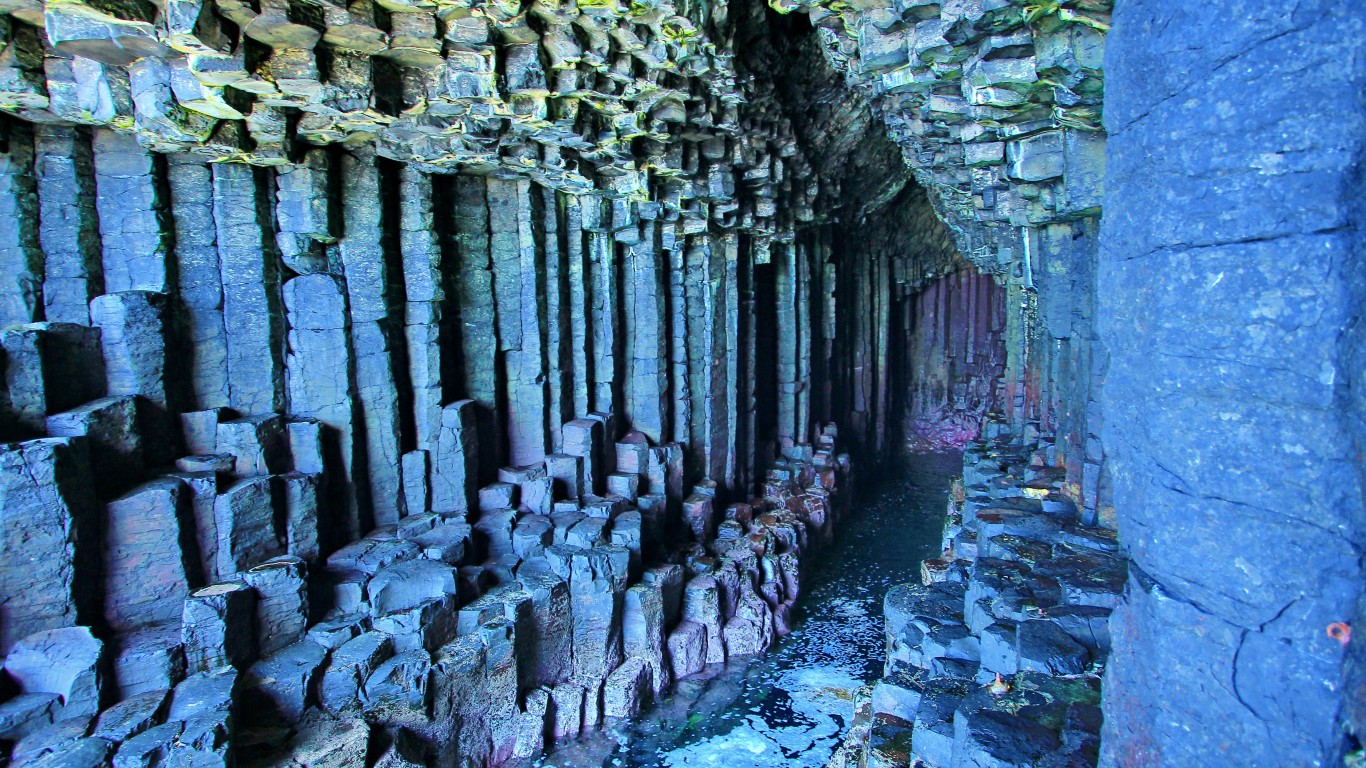
Fingal’s Cave
> Location: Scotland
Unlike other caves, Fingal’s Cave, on the uninhabited island of Staffa in the Inner Hebrides, is symmetrical. One of the best-known caves in Scotland, it is formed from volcanic basalt columns. Though it looks like it was man-made, the cave is completely natural.
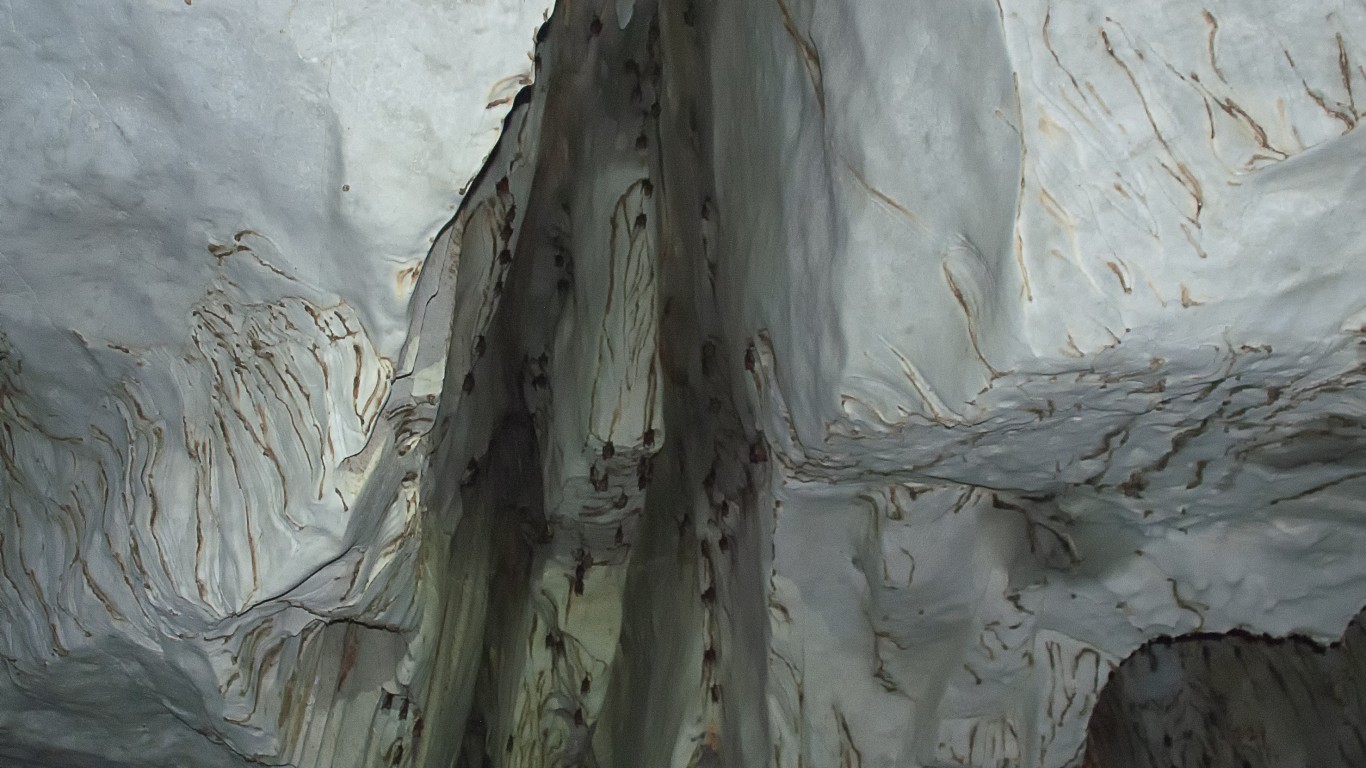
Puerto-Princesa Subterranean River
> Location: Philippines
This National Park on the island of Palawan contains a river that runs five miles underground through a series of limestone caves, connecting a lake to the South China Sea. The above-ground portion of the park features intact old-growth forest.
[in-text-ad-2]

Waitomo Caves
> Location: New Zealand
The name “Waitomo” comes from the Māori words for “water” and “sinkhole.” This cave system on New Zealand’s North Island is an underground labyrinth of caves, sinkholes, and rivers. Visitors can walk, take a boat, and even go ziplining through the darkness.
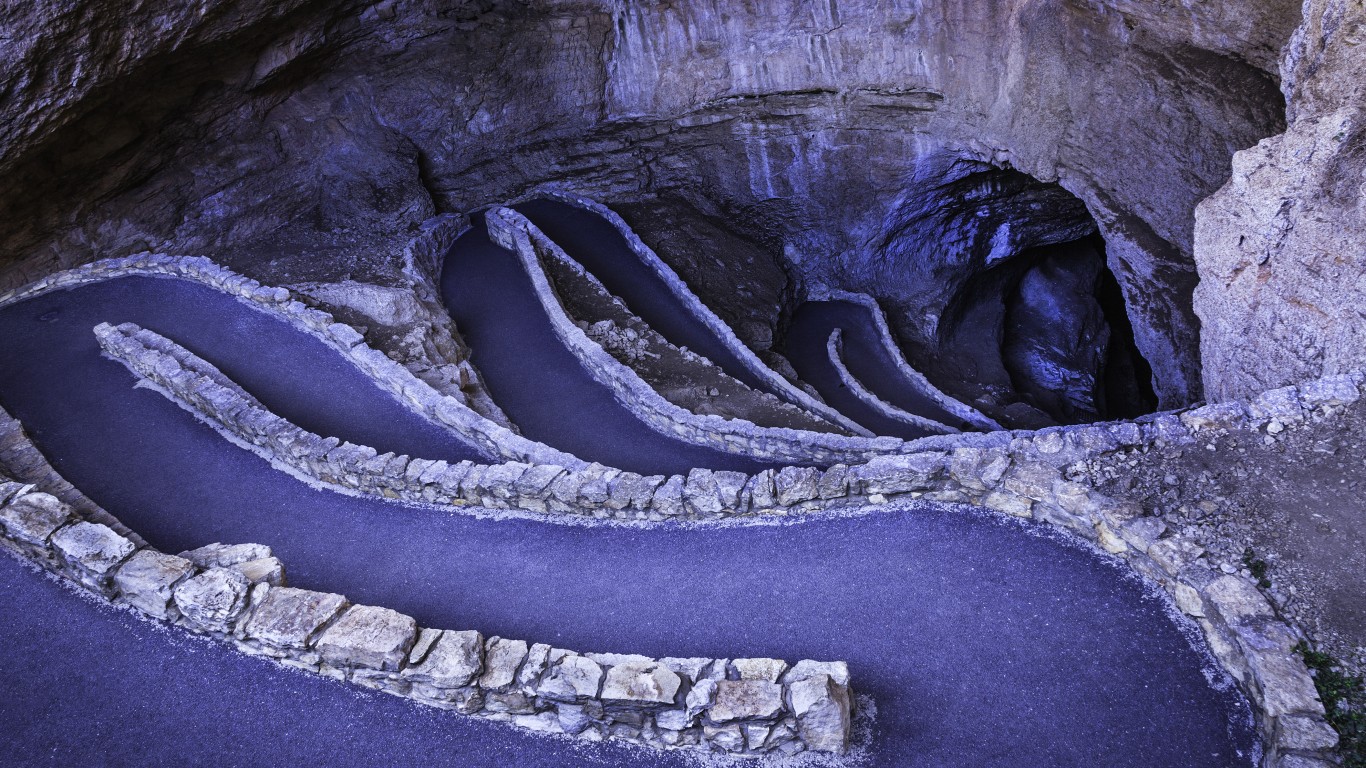
Carlsbad Caverns
> Location: New Mexico, USA
In the desert of New Mexico lies Carlsbad Caverns National Park. There are more than 100 known caves in the park. Carlsbad Cavern, the park’s most popular attraction and its namesake, was formed between four and six million years ago.
[in-text-ad]
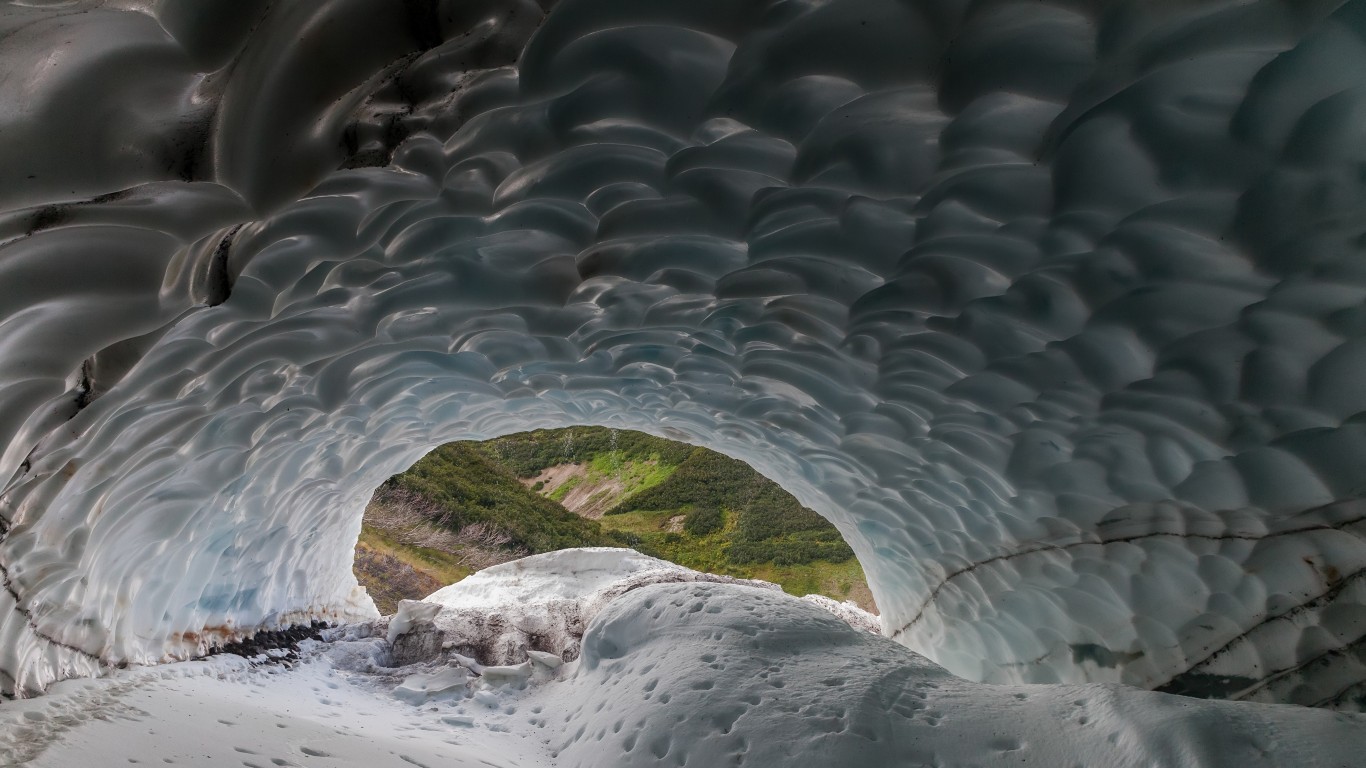
Kamchatka Ice Caves
> Location: Russia
The Kamchatka Ice Caves, in the far northeastern reaches of Russia, were formed by water from hot springs near the Mutnovsky volcano. The roofs of some of the caves are so thin due to the melting of the glaciers above them that sunlight actually gets through, lighting up the caverns.

Phraya Nakhon Cave
> Location: Thailand
Though the Phraya Nakhon Cave is temporarily closed, it’s still the most famous cave in the Khao Sam Roi Yot National Park on Thailand’s coast. Locals believe the cave was discovered about two centuries ago when the ruler suffered a shipwreck during a storm and sought refuge in the cave.
Musanze Caves
> Location: Rwanda
The Musanze Caves are part of an extensive cave system. The main Musanze Cave, on the grounds of Innes University, is part of the lava basaltic layers formed by the Bisoke and Sabyinyo volcanoes, and has 31 entrances. The site of a massacre during the genocidal Rwandan war, it has been a tourist attraction open to the public since 2014. Flying bats are a common sight.
[in-text-ad-2]

Marble Cathedral
> Location: Chile
Accessible only by boat, the Marble Cathedral is part of caves next to a glacial lake in Chilean Patagonia, on a peninsula of solid marble. The brilliant blue-striped caverns are the result of 6,000 years of erosion caused by waves lapping against the marble.

Tham Lod Cave
> Location: Thailand
Tham Lod is a huge river tunnel with three dry caverns. The cave walls are more than 65 feet high. A recently excavated site near the visitor center is said to be a rock shelter where a human skeleton 20,000 years old was found.
[in-text-ad]

Vatnajökull Glacier Cave
> Location: Iceland
The Vatnajökull ice cave, the largest glacier cave in Iceland, is nicknamed the Anaconda Ice Cave for its shape, long and winding like a snake. It is also called the Crystal Ice Cave, a name it shares with other Icelandic glacier caves.

Reed Flute Cave
> Location: China
The Reed Flute Cave in Guangxi, which is more than 180 million years old, is known as “the Palace of Natural Arts.” The cave, named after the lush reeds growing outside, has been a major tourist attraction in China for many decades.
[in-text-ad-2]

Saalfeld Fairy Grottoes
> Location: Germany
The Saalfeld Fairy Grottoes are located in the German state of Thuringia. They were the site of a mine where shale was removed from the ground. The mine closed in the mid-19th century, but it was reopened in 1910 and the remaining minerals created a fairytale-like effect, transforming the grottoes into a colorful underworld.
Shell Grotto
> Location: England
The Shell Grotto in Margate, Kent, was discovered in 1835 and has been open to the public since 1838. The subterranean chalk walls are a mind-bending mosaic of 4.6 million shells placed in the grotto by people of unknown origin.
[in-text-ad]
Kartchner Caverns
> Location: Arizona, USA
Southern Arizona is home to the Kartchner Caverns, a large limestone cave system. The caves house the largest stalactite formation in the world.

Sudwala Caves
> Location: South Africa
The Sudwala Caves in Mpumalanga form one of the oldest cave systems in the world – possibly the oldest – dating back at least 240 million years. A large natural amphitheater inside the caves, dubbed Miriam Makeba Hall (in honor of the famed South African singer) has been used for concerts.
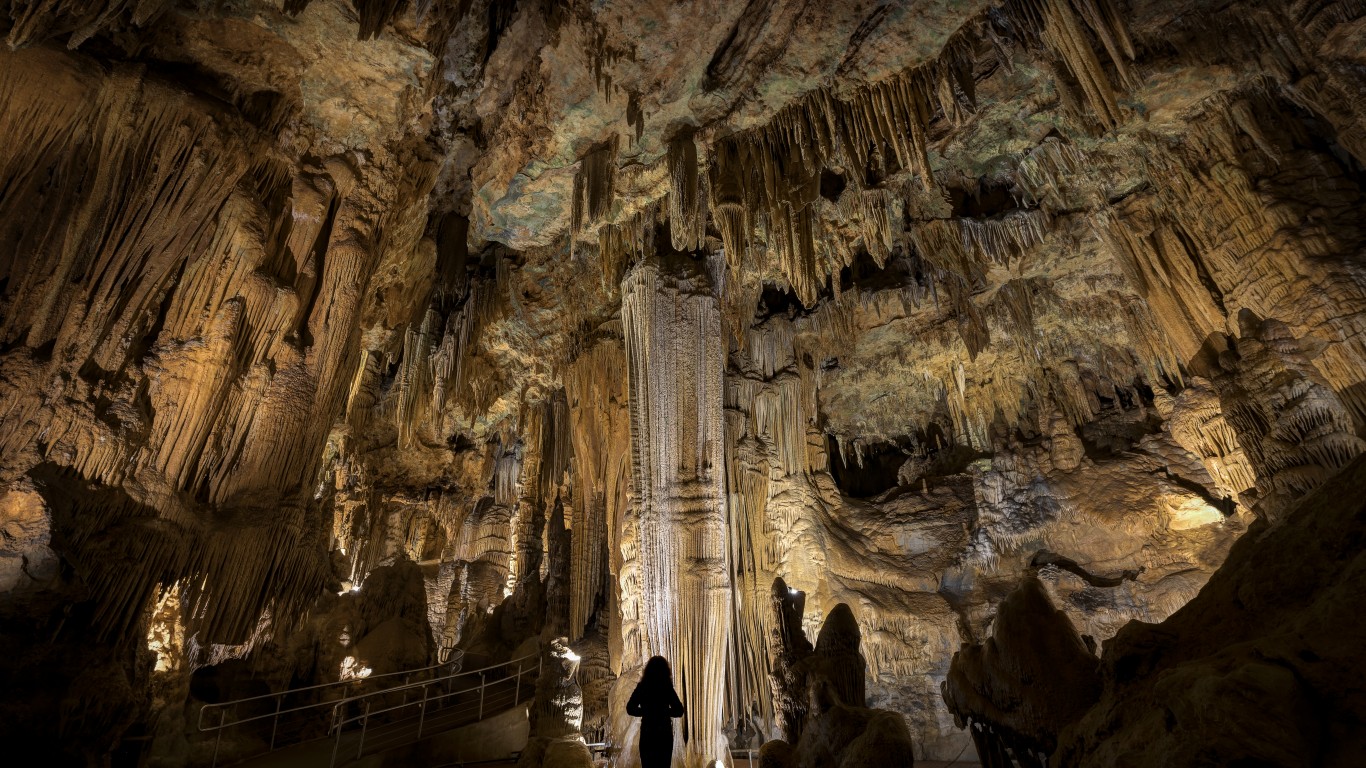
Luray Caverns
> Location: Virginia, USA
Luray Caverns, also known as Luray Cave, is the largest cavern system in the eastern United States. The cavern, in the Shenandoah Valley, has been open to the public since 1878. It is well-lit and the walkways are paved. The ceilings extend about 10 stories high.
[in-text-ad-2]

Vilenica Cave
> Location: Slovenia
The Vilenica Cave in the Karst region of southwestern Slovenia might have been used as a shelter in ancient times, as artifacts have been discovered within. Tourists first visited as early as 1633, making this one of the oldest touring caves in Europe.

The Bothongo WonderCave
> Location: South Africa
The Wonder Cave, in the Bothongo Rhino & Lion Nature Preserve in South Africa’s the Gauteng province, is believed to be 2.2 million years old. Besides awe-inspiring stalactites and stalagmites, it contains a colony of bats.
[in-text-ad]
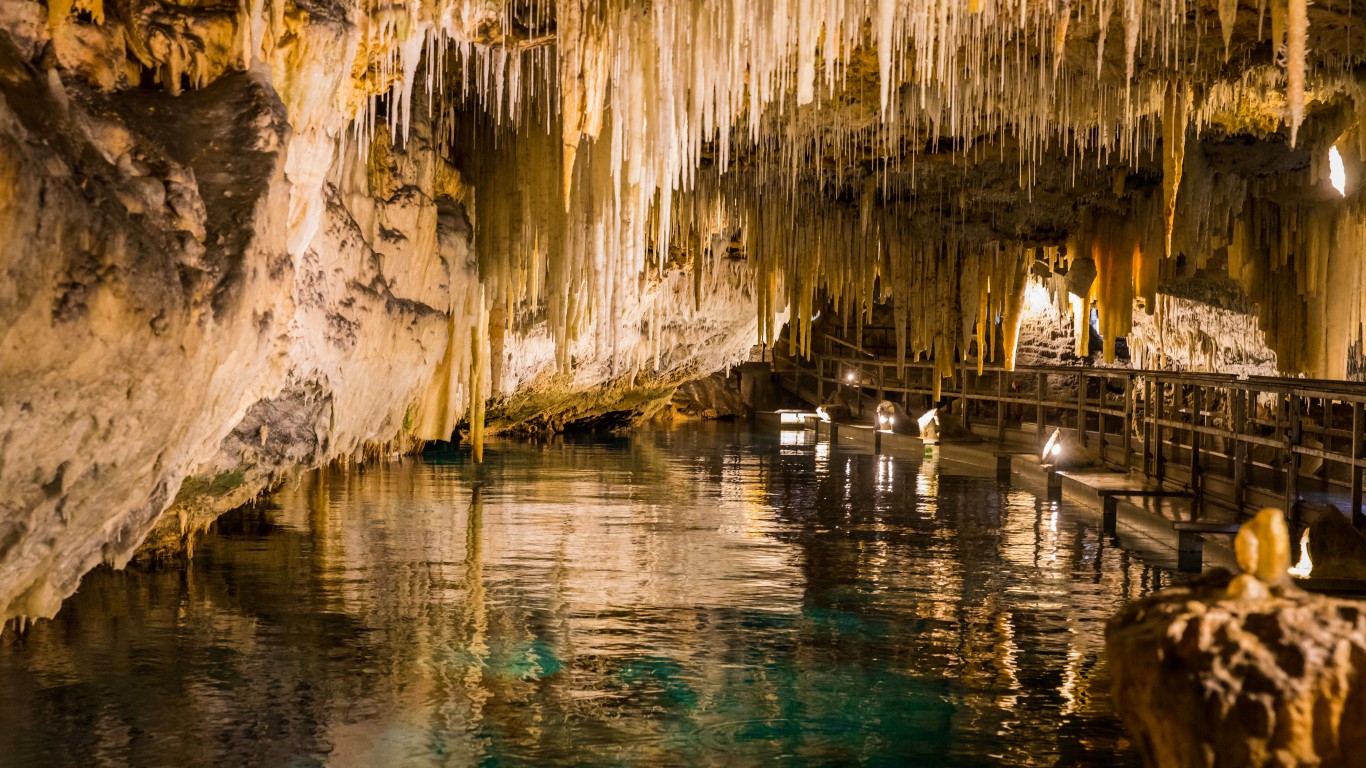
Crystal and Fantasy Caves
> Location: Bermuda
The Crystal and Fantasy Caves in Bermuda’s Hamilton Parish were formed during the Ice Age. Welcoming visitors since the early 20th century, they feature row upon row of stalactites and stalagmites.

Blue Ice Caves
> Location: Norway
Nature was the architect of this wonder in Norway’s Jostedalen Valley. Located under the Nigardsbreen glacier, these caves are surrounded by ice and snow and have naturally sculpted ice walls that glow in different shades of blue.

Križna Jama Cave
> Location: Slovenia
This cave in Slovenia’s Lož Valley, also known as Cross Cave, is for the heartier tourist, because it is naturally preserved with no concrete paths or strong lighting. There are 22 lakes in the cave, which is a sanctuary for hedgehogs, spiders, and other animal species.
[in-text-ad-2]
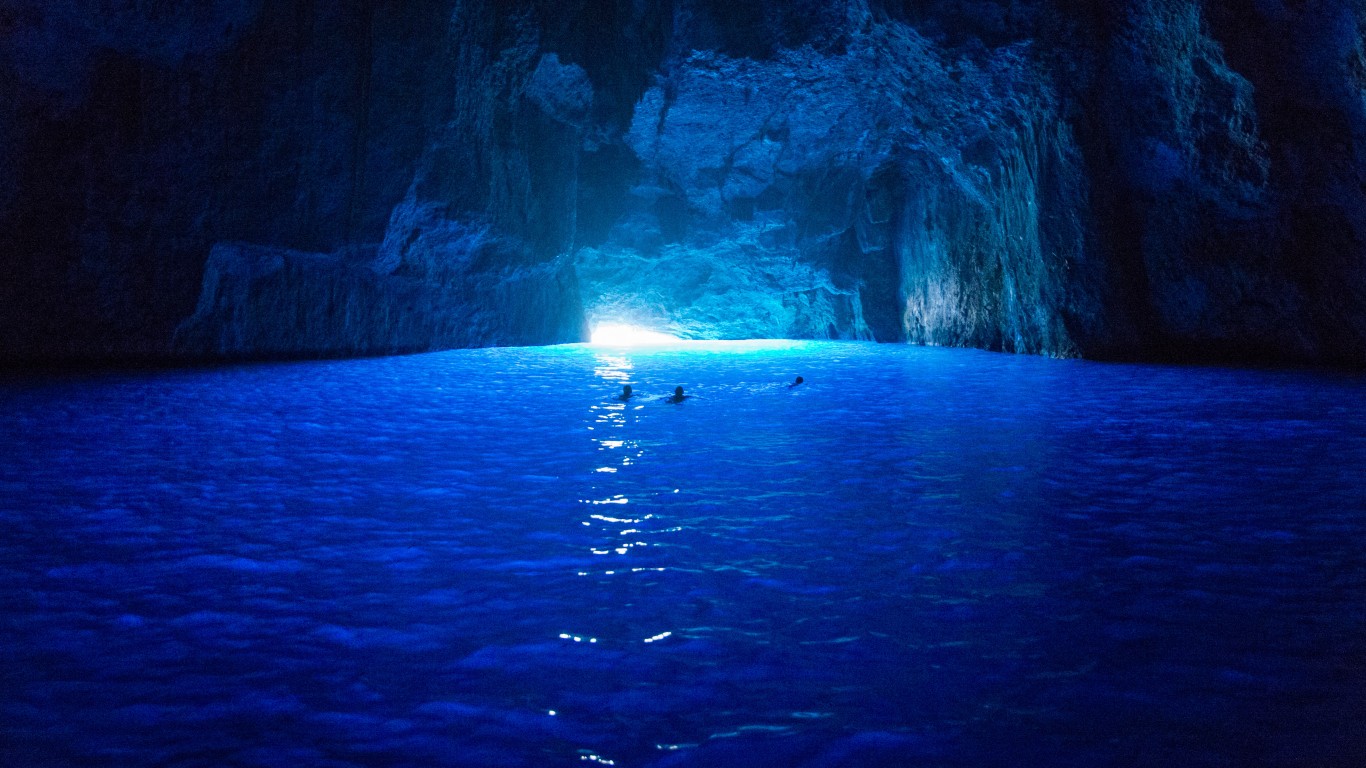
Blue Caves
> Location: Greece
The Blue Caves on the Keri Peninsula are a tourist magnet because of its strikingly blue water and spectacular stalactites. They’re also known as the Marathia Grottoes, as they’re near the village of Marathia.
Carnglaze Caverns
> Location: England
The Carnglaze Caverns cover 65 acres of woodland in the Cornwall section of England. The site is used for music and comedy performances.
[in-text-ad]
Indian Echo Caverns
> Location: Pennsylvania, USA
The Indian Echo Caverns in Hummelstown, Pennsylvania, have been drawing tourists since the 1920s. The caverns were formed out of limestone 440 million years ago and are home to bats, bears, and raccoons.

Nerja Caves
> Location: Spain
The Nerja Caves, in the province of Málaga region of Spain, feature paintings on rock formations from the Paleolithic era as well as the world’s largest stalagmite.
Cave of the Crystals
> Location: Mexico
This cavern full of giant crystals in the state of Jalisco was discovered in 2000 by miners after they pumped water out of a cave nearly 1,000 feet under the Sierra de Naica Mountain. The largest of the selenite crystals, which grew uninterrupted for at least half a million years, are 36 feet long and three feet thick.
100 Million Americans Are Missing This Crucial Retirement Tool
The thought of burdening your family with a financial disaster is most Americans’ nightmare. However, recent studies show that over 100 million Americans still don’t have proper life insurance in the event they pass away.
Life insurance can bring peace of mind – ensuring your loved ones are safeguarded against unforeseen expenses and debts. With premiums often lower than expected and a variety of plans tailored to different life stages and health conditions, securing a policy is more accessible than ever.
A quick, no-obligation quote can provide valuable insight into what’s available and what might best suit your family’s needs. Life insurance is a simple step you can take today to help secure peace of mind for your loved ones tomorrow.
Click here to learn how to get a quote in just a few minutes.
Thank you for reading! Have some feedback for us?
Contact the 24/7 Wall St. editorial team.
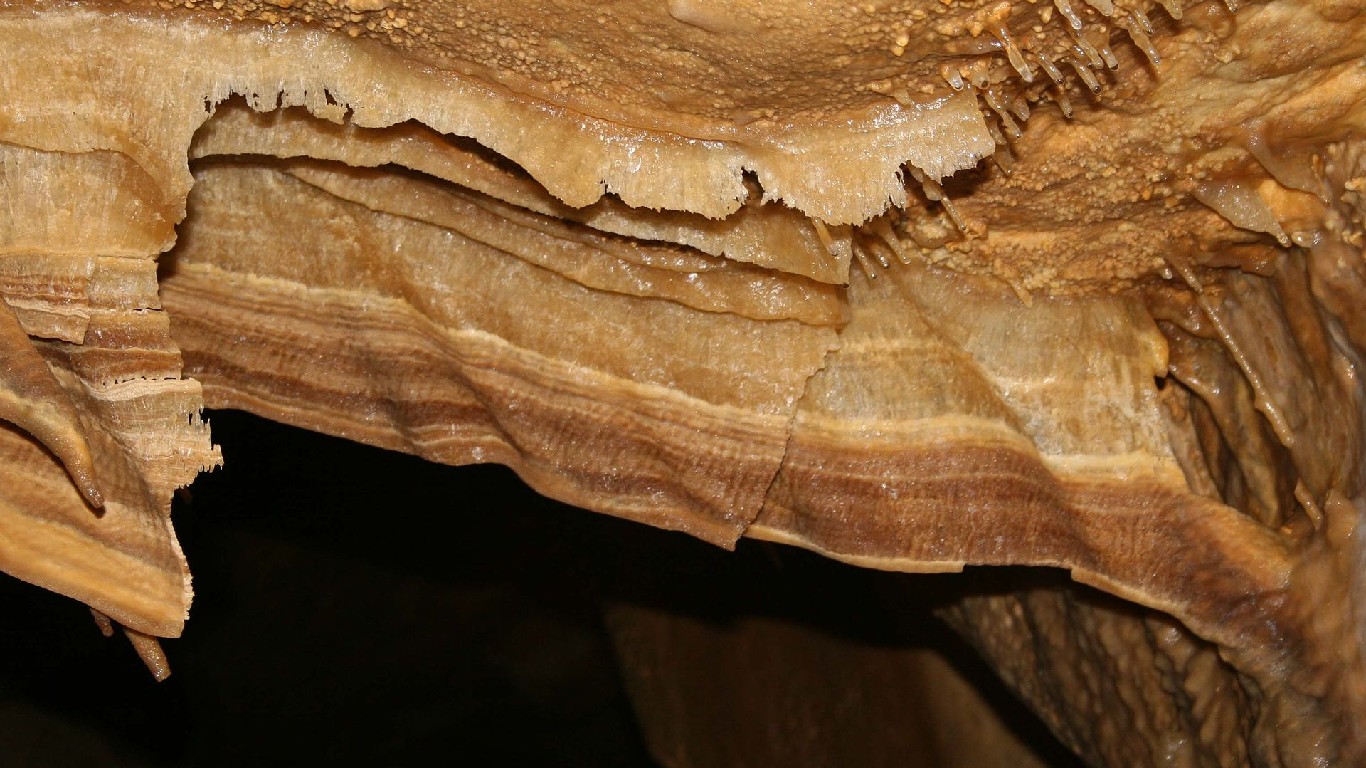
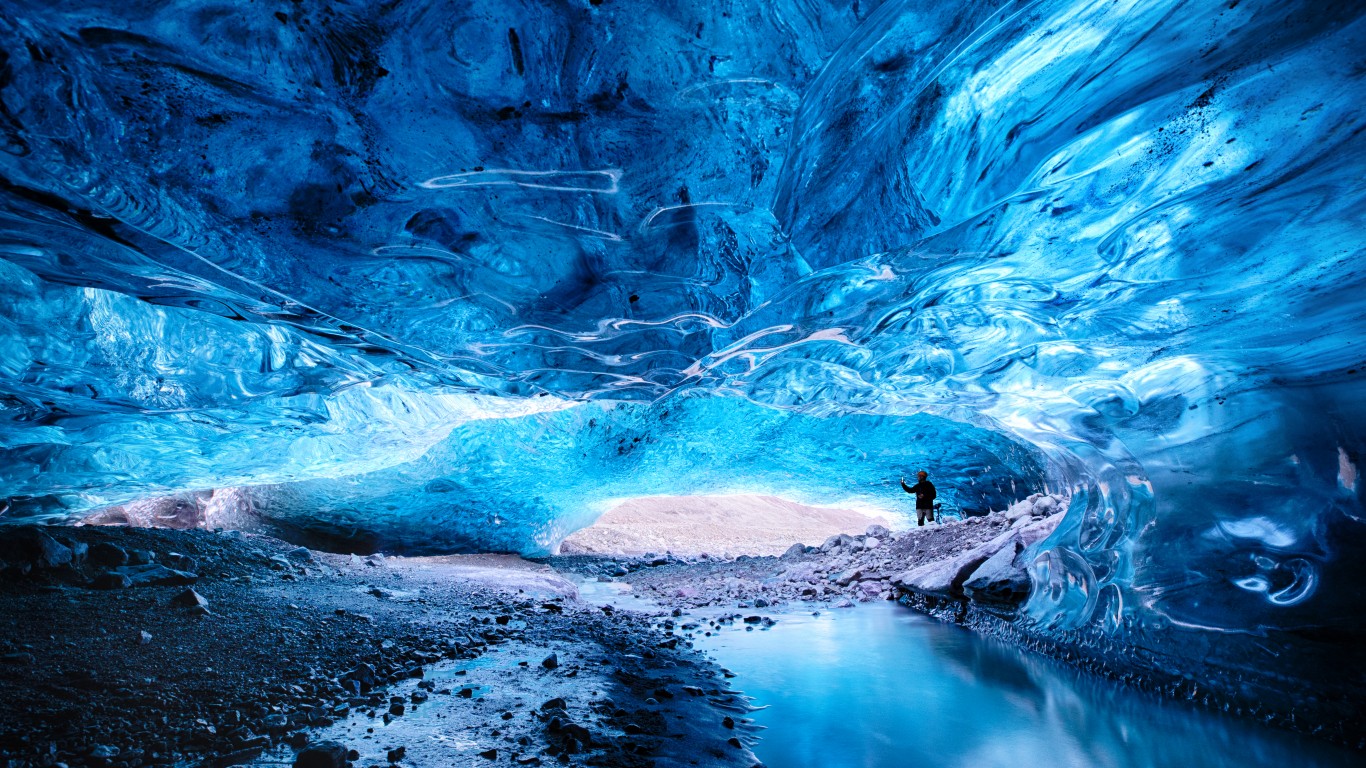 24/7 Wall St.
24/7 Wall St.